You can find all our articles and past events
Free Articles | Inside PMO | PMO Conference | PMO Book Shelf
PMO Service Catalogues

Updated December 2023
The House of PMO has now taken on the ownership of the PMO Service Catalogue book written by Stuart Dixon in 2020.
>> You can find out all about the publication here
Back in February when the UK was normal and we were allowed to go into pubs, we had a ‘PMO Services in the Pub’ night at PMO Flashmob. We wanted to kick off a conversation, spark some debate and exchanging of ideas around a couple of things –
- what the service catalogue is;
- how you use it in your organisation and;
- what’s in the service catalogue.
In this article, we’re going to focus on the basics first, and then next week we’ll look at the outcomes from the work people were doing around the tables over spilt pints and sausage rolls. Let’s kick-off then.
What is a Service Catalogue?
At its simplest, it’s a list of all the services your PMO can offer to a project, programme, portfolio, enterprise-level – whichever level or type of PMO you’re working in.  It’s a way to show your ‘customers’ what you can offer and gives some greater detail about the services. Conversely, it allows the customer to make a more informed choice about what assistance they need from your PMO. Going deeper than that, service catalogues stem from the IT domain. You’re probably already aware of things like service management, ITIL – and how some services have things like metrics and SLAs (service level agreements) associated with them. Well, a PMO service catalogue is along those lines. PMO practitioners got a big leg up when the P3O guidance was published because it has Appendix F – PMO Functions and Services in it. In other words, this handy little appendix pretty much covers a lot of the services a PMO offers – and it even shows the services broken down across Project Office, Programme Office, Portfolio Office and Centre of Excellence. Very nickable we think! Yet a service catalogue is not just a list of the services, it’s more than that. Let’s have a look at how some PMO practitioners are using the service catalogue.
It’s a way to show your ‘customers’ what you can offer and gives some greater detail about the services. Conversely, it allows the customer to make a more informed choice about what assistance they need from your PMO. Going deeper than that, service catalogues stem from the IT domain. You’re probably already aware of things like service management, ITIL – and how some services have things like metrics and SLAs (service level agreements) associated with them. Well, a PMO service catalogue is along those lines. PMO practitioners got a big leg up when the P3O guidance was published because it has Appendix F – PMO Functions and Services in it. In other words, this handy little appendix pretty much covers a lot of the services a PMO offers – and it even shows the services broken down across Project Office, Programme Office, Portfolio Office and Centre of Excellence. Very nickable we think! Yet a service catalogue is not just a list of the services, it’s more than that. Let’s have a look at how some PMO practitioners are using the service catalogue.
How Do You Use a Service Catalogue?
What has been interesting over the years about PMO service catalogues is just how little there is out there published about them. Try to find an example and you’ll be stuck. First, we take a look at how to start developing one (this is part of the Essentials for PMO Analysts qualification)
A Development Approach
There are three levels to think about:
- the service domain – the main area of focus by the PMO – a function really
- the service group – a secondary tier of grouping
- the service – the action or activity offered by the PMO
Here’s an example to demonstrate. Let’s take a look at finance – a big area potentially. Here we’re just looking at one aspect of financial management – and that’s the services we’re carrying out when we’re providing the reports. Other service groups could be the planning or if you’re running a large programme with a dedicated role such as a programme accountant, there would be a service group around bookkeeping for example. Using this approach, the PMO can start to look at the entire breadth and depth of what it is they do and start to see where some services overlap into other service groups. Take the finance management example above – dealing with the timesheets would also fall into the capacity and capability (resource management) service domain and perhaps a service group of resource allocation.
Here we’re just looking at one aspect of financial management – and that’s the services we’re carrying out when we’re providing the reports. Other service groups could be the planning or if you’re running a large programme with a dedicated role such as a programme accountant, there would be a service group around bookkeeping for example. Using this approach, the PMO can start to look at the entire breadth and depth of what it is they do and start to see where some services overlap into other service groups. Take the finance management example above – dealing with the timesheets would also fall into the capacity and capability (resource management) service domain and perhaps a service group of resource allocation. 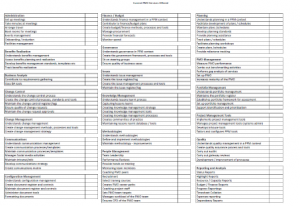 It’s certainly an interesting exercise to do to at least understand what it is you’re offering today. We created something a while back (2015!) called Current PMO Services Offered. This was a combination of all the different types of services and activities that PMOs provided. It was a group exercise from a PMO Flashmob event. You can access that here, it might be useful as you start to think about service catalogues for the first time – or sense-checking for your existing one? [The Excel-based Current PMO Services Offered]
It’s certainly an interesting exercise to do to at least understand what it is you’re offering today. We created something a while back (2015!) called Current PMO Services Offered. This was a combination of all the different types of services and activities that PMOs provided. It was a group exercise from a PMO Flashmob event. You can access that here, it might be useful as you start to think about service catalogues for the first time – or sense-checking for your existing one? [The Excel-based Current PMO Services Offered]
A Menu Approach
Back in the day (late 1999!) we used to use a service menu rather than a catalogue. All that was needed was a list of the services the PMO offered and the ‘customers’ i.e., mainly project and programme managers, were able to pick off the services they needed for their projects. It was a consulting environment so one of the main drivers for services from the PMO was the fact that PMs had to be able to cost them within the project budget. It’s still an approach that’s valid today because a full-blown service catalogue was an overkill. It’s a lesson we can all learn – understand why you’re creating a service catalogue; who is it being used by and for what purpose? The PMO shouldn’t be spending huge amounts of time on a vanity project of ‘look how much we can do for you’ if no-one is interested or likely to use it. [The service menu Excel-based file is here]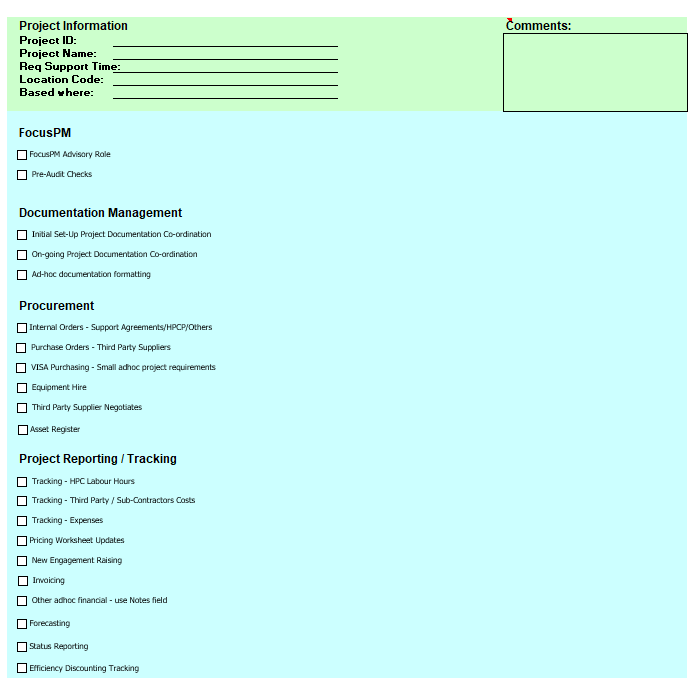
A Gap Analysis
One PMO Flashmobber shared an insight from their PMO which was using the service catalogue – alongside other artefacts – to build the case for an extra resource to provide additional services that the PMO should be providing to meet customer and stakeholder expectations. With an existing service catalogue in place, they were able to quickly show the as-is and the to-be across all the service offerings from the PMO. Here’s an example focusing on the portfolio management service area. The red denotes the new services required:
- Portfolio management – annual, quarterly and monthly cycles
- Portfolio prioritisation and alignment to strategy
- Financial management – budget, actuals/run rates, forecasting, variance reports, modelling
- Resource capacity modelling – demand vs supply
- Change requests and impact assessments
- Portfolio benefits capture, benchmarking and realisation review
- Performance management, benchmarking and KPIs
- Portfolio level risk, issue, assumption, dependency management.
PMO service catalogues have their different uses – being able to pick-and-mix services offered by the PMO is one of the most popular uses. It’s a great conversation starter when working with Project and Programme Managers – about which services they see as the most crucial – or just gaining an insight into what the PMO actually offers!  It is also used by the PMO itself to actually document what the PMO does, how it does it, for whom, when, where. Next, we go deeper and look at what’s in the service catalogue and we start by sharing the PMO service template used on the evening of the session.
It is also used by the PMO itself to actually document what the PMO does, how it does it, for whom, when, where. Next, we go deeper and look at what’s in the service catalogue and we start by sharing the PMO service template used on the evening of the session.
What’s in the Service Catalogue?
We’ve established that the service catalogue contains all the services that the PMO provides, how those services are categorised and laid out will, of course, depend on an individual organisation’s PMO context – not all PMOs offer the same services. The same principle applies for the level of detail of each service too – some organisations need to see it, others are happy with just a description. It depends on what drives the need for a service catalogue in the first place. In our session, we used the following template to start looking at several different services (more on that in the next post) Here it is: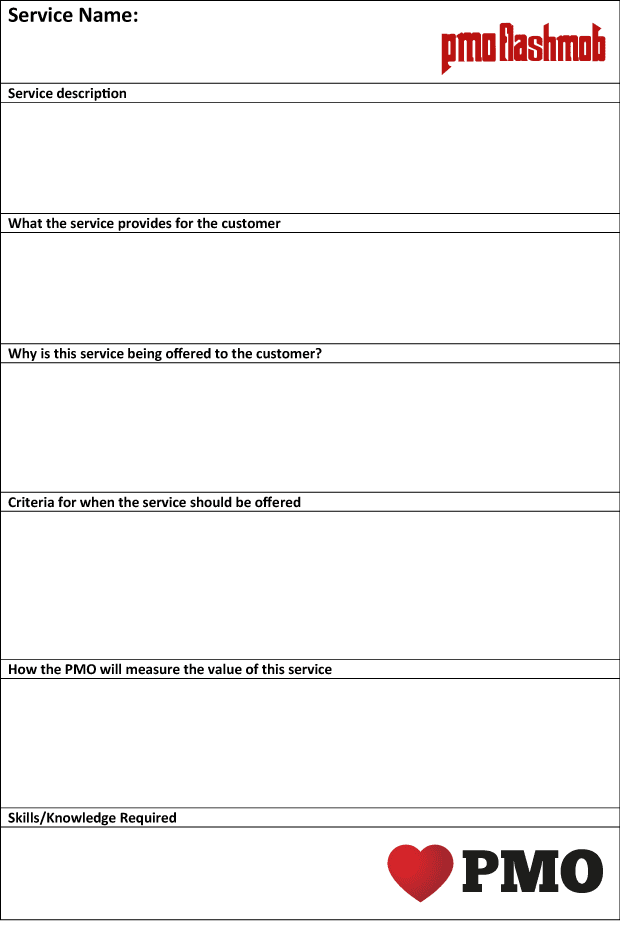 You can also [download the Word document too] There’s also a worked example here so you can see how the template can be used:
You can also [download the Word document too] There’s also a worked example here so you can see how the template can be used: I don’t think there is a huge amount of explanation needed – which is exactly right – keep it simple! What we liked about this is that it’s a great exercise to work through with the PMO team members and then a sanity check with the customers who will be using the service.
I don’t think there is a huge amount of explanation needed – which is exactly right – keep it simple! What we liked about this is that it’s a great exercise to work through with the PMO team members and then a sanity check with the customers who will be using the service. 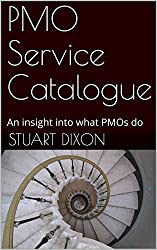 The template was kindly provided by Stuart Dixon, Stuart has recently published a book which we know you’ll find useful if you’re looking to do more around PMO Service Catalogues. The book: PMO Service Catalogue: An insight into what PMOs do is available from Amazon. We flicked through it on the night and it’s a hefty tome which features a ton of services, definitely one of those books you’ll dip into rather than reading cover to cover – a great reference book. We’ll be back with the insights from the evening session itself when we share how the PMO Flashmobbers got on with these services and using the template to further define them. Their services included:
The template was kindly provided by Stuart Dixon, Stuart has recently published a book which we know you’ll find useful if you’re looking to do more around PMO Service Catalogues. The book: PMO Service Catalogue: An insight into what PMOs do is available from Amazon. We flicked through it on the night and it’s a hefty tome which features a ton of services, definitely one of those books you’ll dip into rather than reading cover to cover – a great reference book. We’ll be back with the insights from the evening session itself when we share how the PMO Flashmobbers got on with these services and using the template to further define them. Their services included:
- Resource Allocation
- Predictive Reporting
- Enabling Decision-Making
- AI Reporting
- Influencing
- Firefighting!
Carry On Reading
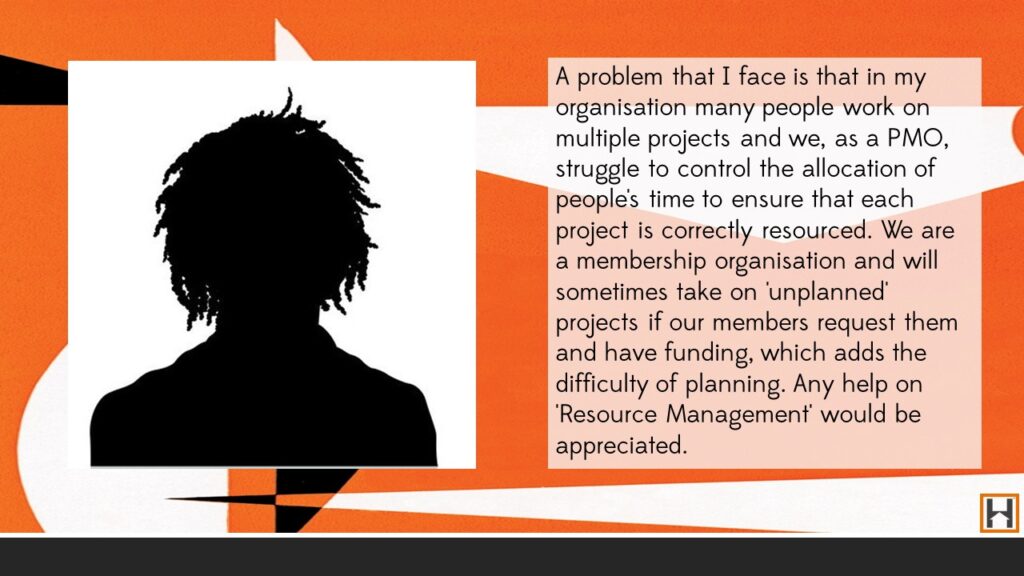

Trackbacks/Pingbacks